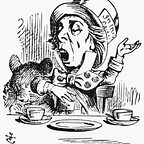It wasn’t long after the invention of the telephone that people started to use it to broadcast plays, music, and news. In this weeks article we will dive into what’s the story with telephone broadcasting.
Throughout the 1870’s and 1880’s there were various experiments and one-off exhibitions of the technology. A major milestone was the 1877 concert held in Philadelphia and broadcasted to New York City to much acclaim.
The next big step came during the 1881 Paris World Expo. During the Expo, Clément Ader configured 80 telephone transmitters across the stage of the Paris Opera. This setup was designed to send an early form of stereo audio. At the Expo visitors could enter a booth and listen to the opera through a pair of headphones. This technology spread throughout Europe during the rest of the decade. The King of Portugal used it to “attend” the opera when he couldn’t be in there in person. Between 1884 and 1887 the technology expanded to Belgium, Lisbon, and Stockholm.
The Théâtrophone
In 1890 the first long lasting and widespread telephone broadcasting system launched in Paris: The Théâtrophone. The service provided theater and opera performances to subscribers as well as news updates at regular intervals.
The Théâtrophone quickly expanded to the large hotels, cafes, and restaurants in Paris. Patrons could buy 5 minutes of listening time for ½ a Franc at public booths. The device was also available was for private subscriptions, reaching 1,300 subscribers by 1893.
Telefon Hírmondó
Next launched was the most successful, largest, and longest running Telephone Newspaper service, the Telefon Hírmondó. It was launched in 1893 by Tivador Puskar with 60 subscribers and it didn’t take long for the service to start growing.
We greet the inhabitants of Budapest. We greet them in an usual way from which telephone broadcasting all over the world will start its victorious journey. — First Transmission on Telefon Hírmondó
Unfortunately Tivador passed away a month after launch. And the business went to his brother who turned around and sold it to Estvan Popper. Popper took charge and drove the companies growth.
The system was setup in a hub and spoke model. There were 27 hubs spread throughout Budapest and each subscriber had two telephone receivers connected to long wires to their nearest hub. Each hub was in turn connected to the central office. Starting with only 43 miles of wire, it reached 1,100 miles by 1907, connecting upwards of 15,000 subscribers. The company paid for the installation of the receivers but required customers to sign up for a year of the service. The yearly fee was $17.56 in 1901, or $1,230 in 2018, which a subscriber would pay over three installments. The service also ran ads, charging companies the equivalent of 13 dollars for a 12 second ad. Amplification wouldn’t be widely available until much later so each news article was read aloud by men hired specifically for their especially loud voices.
Contemporary reviews were generally positive, praising the forward march of technology. But it of course wasn’t unanimous with the Grand Forks Herald of North Dakota reporting:
Every little while someone writes about the telephone newspaper at Buda-Pesth, and tells what a fine thing it is. We are free to confess that we are not impressed. The beauty of the printed newspaper is that you can pick it up when you get ready, read first about the things that interest you, and go on about your business. Imagine the feelings of the man in a hurry who has to wait until the telephone has described the latest developments in the political situation before he can find out whether the Sox or the Tigers won yesterday’s game.
Other Services
Even with the occasional neigh-sayer telephone broadcast services continued to spread throughout Europe. It next launched up in England with the Electrophone, launching in 1895. It was a popular service running for 30 years broadcasting Opera and Theater performances and at one point even counting Queen Victoria as a customer.
In Stockholm there system was slightly different. Customer would call the operator and requat “Telephone news.” At that point the operator would connect the caller to a pre-recorded phonograph which would play a summary of the days news.
Telephone Broadcasting in the United States
No less than 20 different companies tried to start telephone broadcasting or telephone news services in the United States. While some were fairly successful, in some cases reaching hundreds of users, many never got past the startup phase, and none had the staying power of those in Europe. Despite have a huge impact in the development of the telephone, the United States played almost no role in the development or expansion of telephone broadcasting.
The End
Why have you most likely never heard of telephone broadcasting before? In short, radio! Starting in the 192’s and picking up steam through out the 30’s these companies found they could not compete with free broadcast radio. The Electrophone closed in 1925, while the Théâtrophone hung on until 1932 when it finally shut its doors. Telefon Hírmondó held strong, in the 20s it obtained a license to start a radio station and for awhile it offered both services, with the telephone service serving as a relay for their radio broadcasts for those without radio. In 1930, while similar services in countries around them were closing their doors, they reported 91,000 subscribers. World War II destroyed all their wiring, however the service shut down for good in 1944. Bringing the close to an interesting era in both telephone and broadcasting history.
This was a quick look at telephone broadcasting, if the subject interests you I can’t recommend earlyradiohistory.us enough, it goes into amazing detail on the subject!
And that’s the story.
